Planning a family wardrobe feels overwhelming. The wrong choice creates clutter and daily frustration. I’ll show you how to consider four key factors to get it right.
To plan a family wardrobe, focus on four factors: 1. The users and their specific needs. 2. The physical space and room layout. 3. The materials and overall aesthetic. 4. The quality of the hardware, like sliding systems and hinges, which ensures long-term durability and smooth operation.
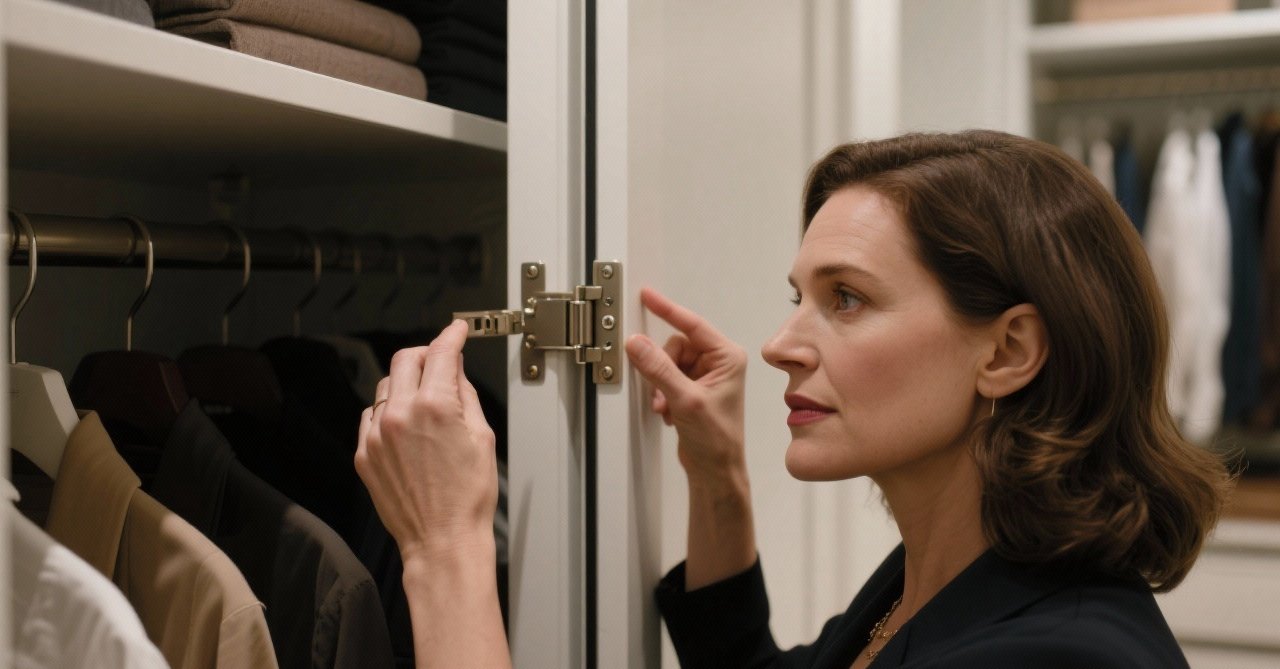
Getting the big picture is a great start, but the real success is in the details. When we work with professional buyers like Helen, a sharp purchaser from USA, we always stress that understanding the details is what separates a good wardrobe from a great one. Let’s break down exactly how you can apply these factors to your own planning process and build something that truly lasts.
How do you decide on your wardrobe?
Struggling to choose a wardrobe design? The sheer number of options can feel paralyzing. I’ll help you focus on what truly matters so you can make a confident decision.
Decide on your wardrobe by first assessing who will use it and what they need to store. Then, measure your available space accurately. Finally, choose a style and materials that match your home’s aesthetic and your budget, paying close attention to the quality of the hardware.
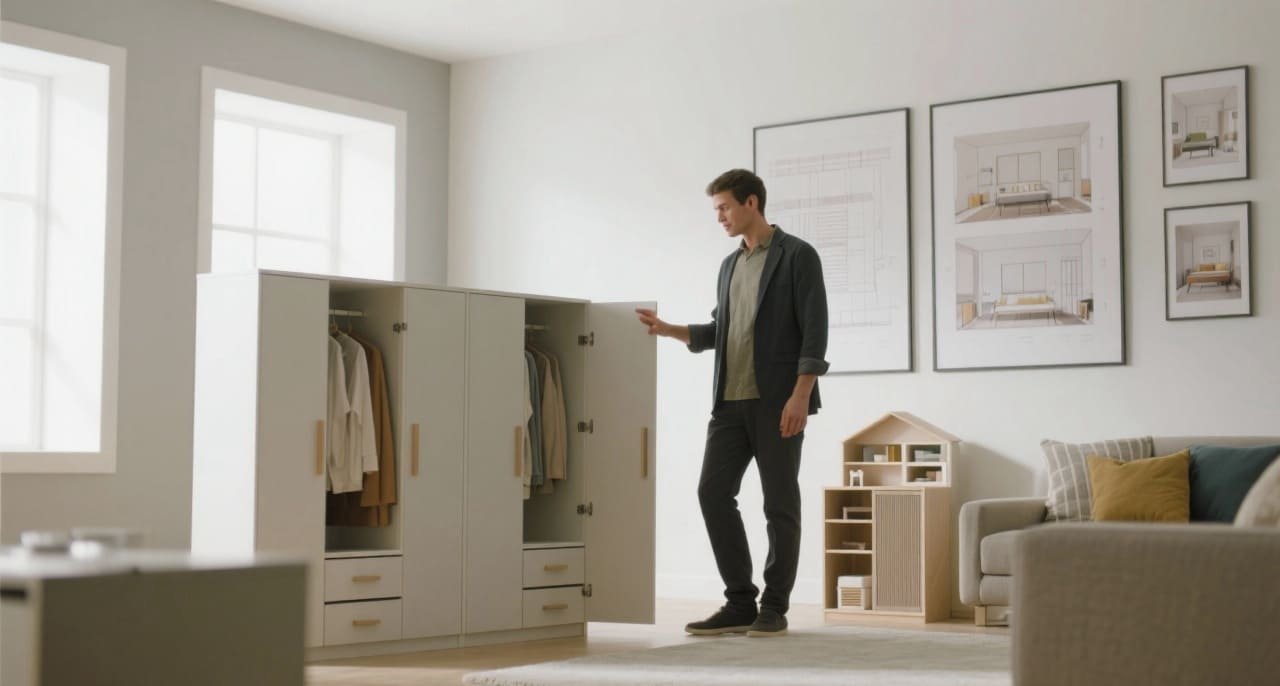
Deciding on a wardrobe is a step-by-step process. First, think about the user. Is it for adults, children, or shared? An adult might need more long hanging space for dresses and coats, while a child’s wardrobe needs lower, accessible rails and more drawers for toys and folded clothes. Next, grab a tape measure. Know the exact height, width, and depth of your space. This measurement is critical because it determines the type of doors you can use. If the room is tight on space, a wardrobe with a smooth sliding wheels system is a much better choice than hinged doors that need room to swing open. Finally, consider the style. As you know, wardrobe door materials are incredibly diverse now. From classic wood to modern frosted glass, the choice affects the entire room’s feel. No matter the style, never overlook the hardware. A beautiful wardrobe with a sticking drawer or a jerky sliding door is a constant annoyance.
| User | Primary Storage Need | Recommended Feature |
|---|---|---|
| Adults | Long hanging clothes, shoes | Double hanging rods, dedicated shoe racks |
| Children | Folded clothes, toys | Low, accessible drawers and shelves |
| Shared | Clear division of space | Internal dividers, separate sections |
What is the 3 3 3 rule for a wardrobe?
You may have heard of the "333" rule for clothes, but it’s often misunderstood for wardrobe planning. This simple minimalist idea is confusing. I’ll clarify it for you.
The 333 rule is a minimalist challenge for clothing, not a direct rule for wardrobe design. It means wearing only 33 items for 3 months. For wardrobe planning, it inspires a design that supports a curated collection, focusing on accessibility and visibility over sheer volume.
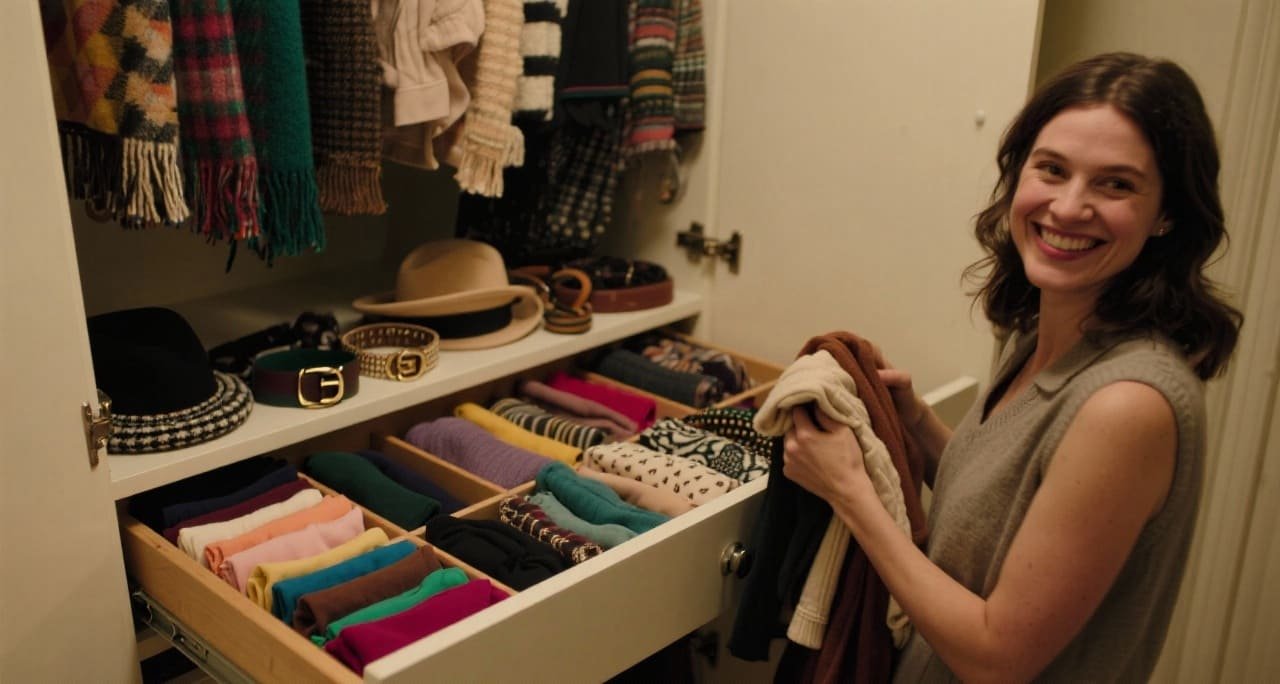
Let’s be clear: the 333 rule, or Project 333, is about decluttering your clothes, not about designing your closet with only three of everything. But we can borrow its spirit to design a smarter wardrobe. The goal of minimalism is to make life easier. A wardrobe that helps you see everything you own at a glance does just that. Instead of cramming things in, you design for efficiency. This means creating a home for everything. Think about using a mix of storage: double hanging rods for shirts and jackets, a single tall space for dresses, shallow drawers for accessories, and deep drawers for sweaters. High-quality hardware is essential here. A smooth Drawer Slide or a silent Wardrobe Sliding Wheels System makes accessing your things a pleasure, which encourages you to keep it organized. The design should serve the philosophy of "less is more" by making your curated collection functional and beautiful.
| 333 Clothing Concept | Wardrobe Design Translation |
|---|---|
| Limited Items | Design for visibility, not maximum capacity. |
| Seasonal Rotation | Include accessible high/low storage for off-season items. |
| Versatility | Create flexible zones with adjustable shelves. |
| Mindful Living | Invest in quality hardware for a smooth daily routine. |
What are the factors influencing wardrobe selection?
Choosing a wardrobe seems simple, but hidden factors can ruin the final result. You might overlook critical details. Let’s uncover the elements that truly influence the right choice for you.
Key factors influencing your wardrobe selection are your family’s storage needs, the room’s dimensions, your budget, and the desired aesthetic. Most importantly, the quality of hardware like sliding systems and hinges will determine the wardrobe’s long-term durability and daily ease of use.
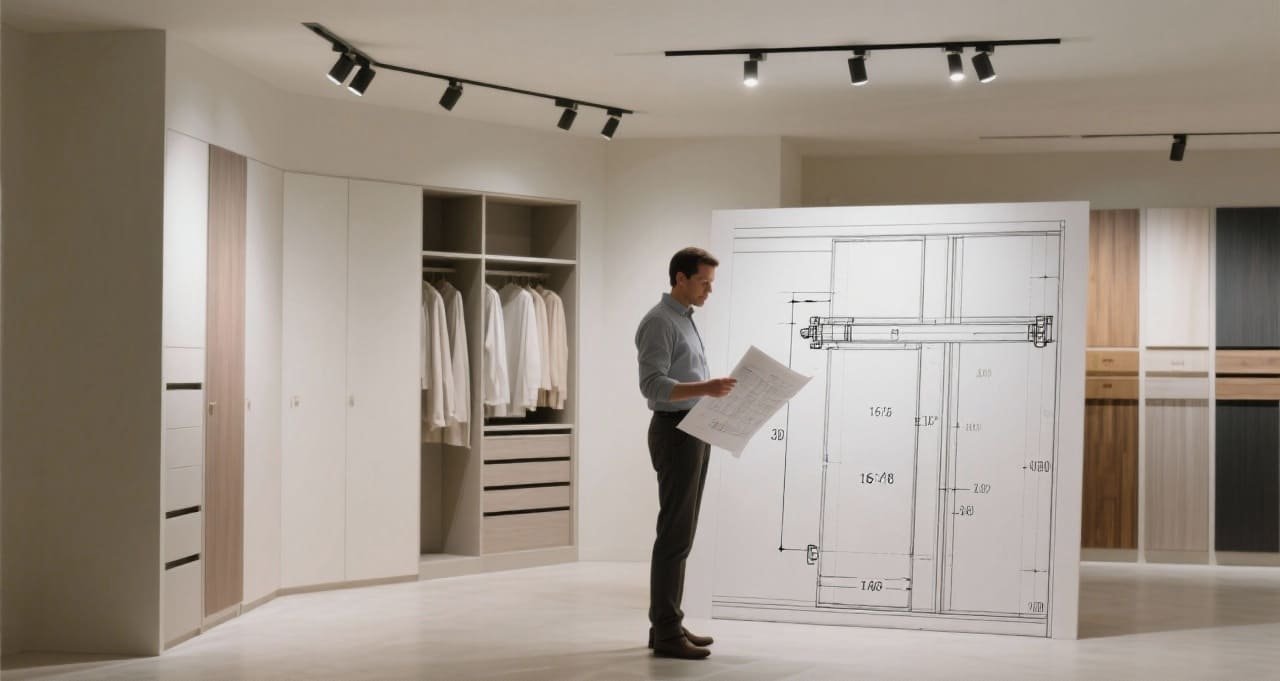
When I talk to clients, I break down the influencing factors into four groups. The first is Functional. Who is using it and what are they storing? This is the most important question. The second is Spatial. How big is the room? How high are the ceilings? Is there space in front for hinged doors to open, or do you need a space-saving Partition Room Sliding Door Rollers System? The third is Aesthetic. This is where you think about materials and colors. Different door panels, from solid wood to mirrored glass, create completely different effects. The final, and in my opinion most crucial, factor is Quality. This is all about the construction and the hardware. I once had a furniture factory client who chose beautiful cabinets but used cheap hinges. Within a year, the doors were sagging and wouldn’t close properly. He learned that the parts you don’t see, like the Cabinet Hinge and Drawer Slides, are what guarantee a product lasts. That’s why at opensliding, we focus on making top-quality hardware systems.
| Factor | Key Question | Example Consideration |
|---|---|---|
| Functional | What will be stored inside? | Long coats require tall hanging space. |
| Spatial | How much floor space is available? | A small room benefits from sliding doors. |
| Aesthetic | What style matches the room? | Mirrored doors can make a room feel larger. |
| Quality | Will it last and work well? | Are the sliding rollers smooth and hinges strong? |
What are the considerations for a wardrobe?
Ready to buy a wardrobe but worried you’ll forget something important? This final checklist can be a lifesaver. Let’s run through the essential considerations before you make a final decision.
The main considerations for a wardrobe are its internal layout, door type, materials, and hardware quality. Think about adjustable shelving, sufficient hanging space, smooth doors (sliding or hinged), and durable hardware for long-term satisfaction. This ensures the wardrobe works for you.
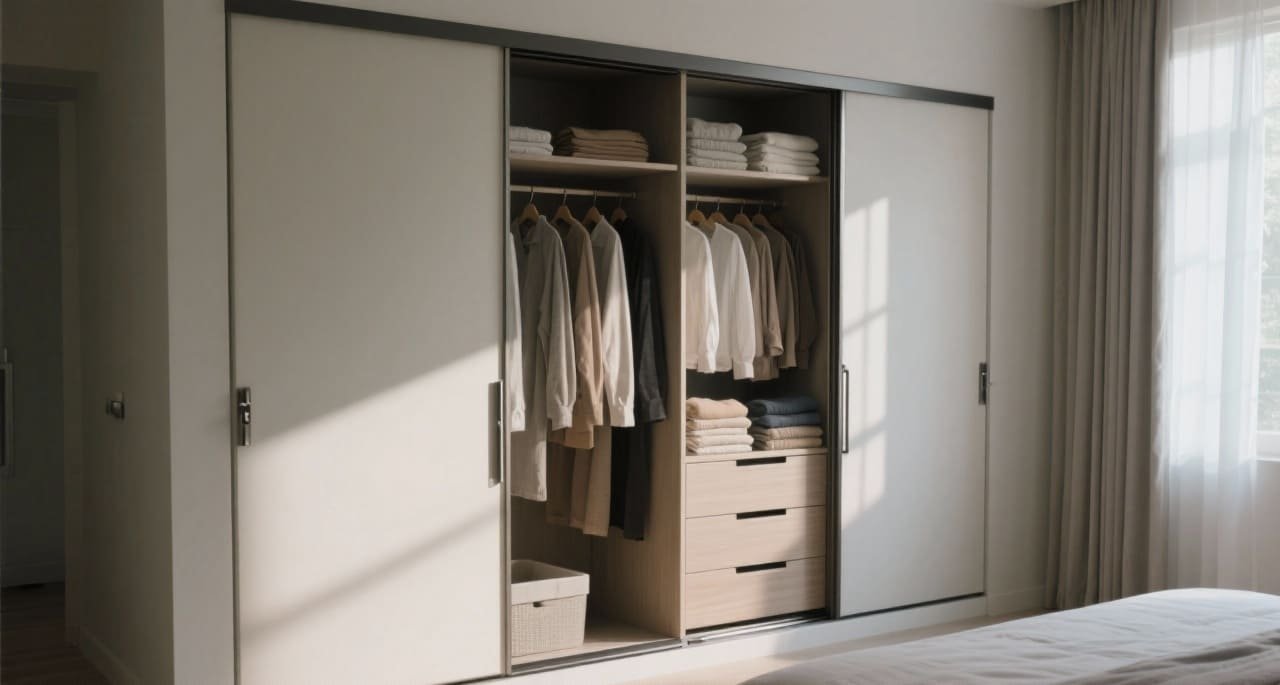
Before you finalize any wardrobe plan, run through this checklist. First, Internal Layout. Have you included a mix of storage? You need short hanging space for shirts, long hanging space for dresses, shelves for folded items, and drawers for small things. Adjustable shelves are always a smart choice for future flexibility. Second, Door System. This is a huge decision. Sliding doors are modern and save space, but you can only open one section at a time. Hinged doors give you full access at once but need clearance to open. The choice comes down to your space and preference, but the quality of the system is non-negotiable. A good Cabinet Sliding Door Roller System should be silent and effortless. Third, Materials. Consider durability and maintenance. Laminates are easy to clean, while solid wood is classic but requires more care. Finally, double-check the Hardware. This is the heart of your wardrobe. Ensure the handles are sturdy, hinges are robust, and all moving parts are from a reliable manufacturer.
| Door Type | Pros | Cons | Best For |
|---|---|---|---|
| Sliding Doors | Space-saving, modern look, large panels | Can’t see entire contents at once | Small rooms, contemporary designs |
| Hinged Doors | Full access to contents, traditional feel | Requires clearance space to open | Larger rooms, traditional or classic designs |
Conclusion
In short, planning the right wardrobe means balancing user needs, available space, personal style, and quality hardware. Get these factors right, and you’ll create a functional solution for years.

